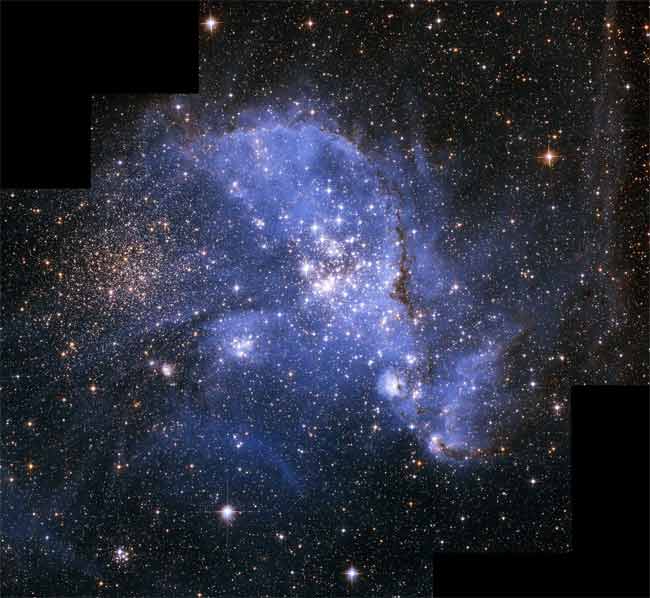Star Theory Gets New Spin

The spinningof stars was thought to work like a food processor, bringing material from deepinside to the surface and mixing everything in a predictable way. Thekitchen-science analogy just broke down.
Instead,turning up the spinning speed can yield a layer cake or marbled effect, a teamof scientists finds.
To someextent, all stars are thought to spin. Cooler stars spin the slowest, with the sunrotating at about 4,500 mph (7,200 kph), while the massive hotties can whiparound at more than 600,000 mph (1 million kph).??
The rapidrotation is thought to produce currents that move material from a star'score, including fusion-produced elements such as nitrogen, to the surface.
"Currentmodels of star rotation could be compared to a food processor," said leadresearcher Ian Hunter of Queen's University of Belfast in Northern Ireland. "As you turn up the speed, the mixing between the layers of a starbecomes more thorough and more nitrogen should be visible at the surface."?
However,Hunter found more surface nitrogen than expected on 20 percent of slow spinnersand less than expected on 20 percent of rapid rotators. The researchers studiedmore than 800 young stars in two nearby galaxies, the Large and SmallMagellanic Clouds.
"Thefood processor model doesn't seem to be working, or at least can't explain thewhole picture," Hunter said. His results were presented this week at the Royal Astronomy Society'sNational Astronomy Meeting in Ireland.
Breaking space news, the latest updates on rocket launches, skywatching events and more!
Theslowpokes may have large magnetic fields that make them rotate slowly whileproviding a mixing mechanism, said Hunter's colleague Philip Dufton of Queens University. "This is, however, very speculative," Dufton stressed.
Theresearchers are even more puzzled by the dearth of surface nitrogen in the fastrotators.
"Theonly idea that we have is that they could be part of a binarysystem (two stars orbiting each other)," Dufton told SPACE.com,"and that a recent interaction between them has spun up the star. [So] formost of its life the star rotated slowly and no mixing occurred." Henotes, the research has yet to find any evidence of such star companions.
- Top 10 Star Mysteries
- Vote: The Strangest Things in Space
- Why Fast-Spinning Young Stars Don't Fly Apart

